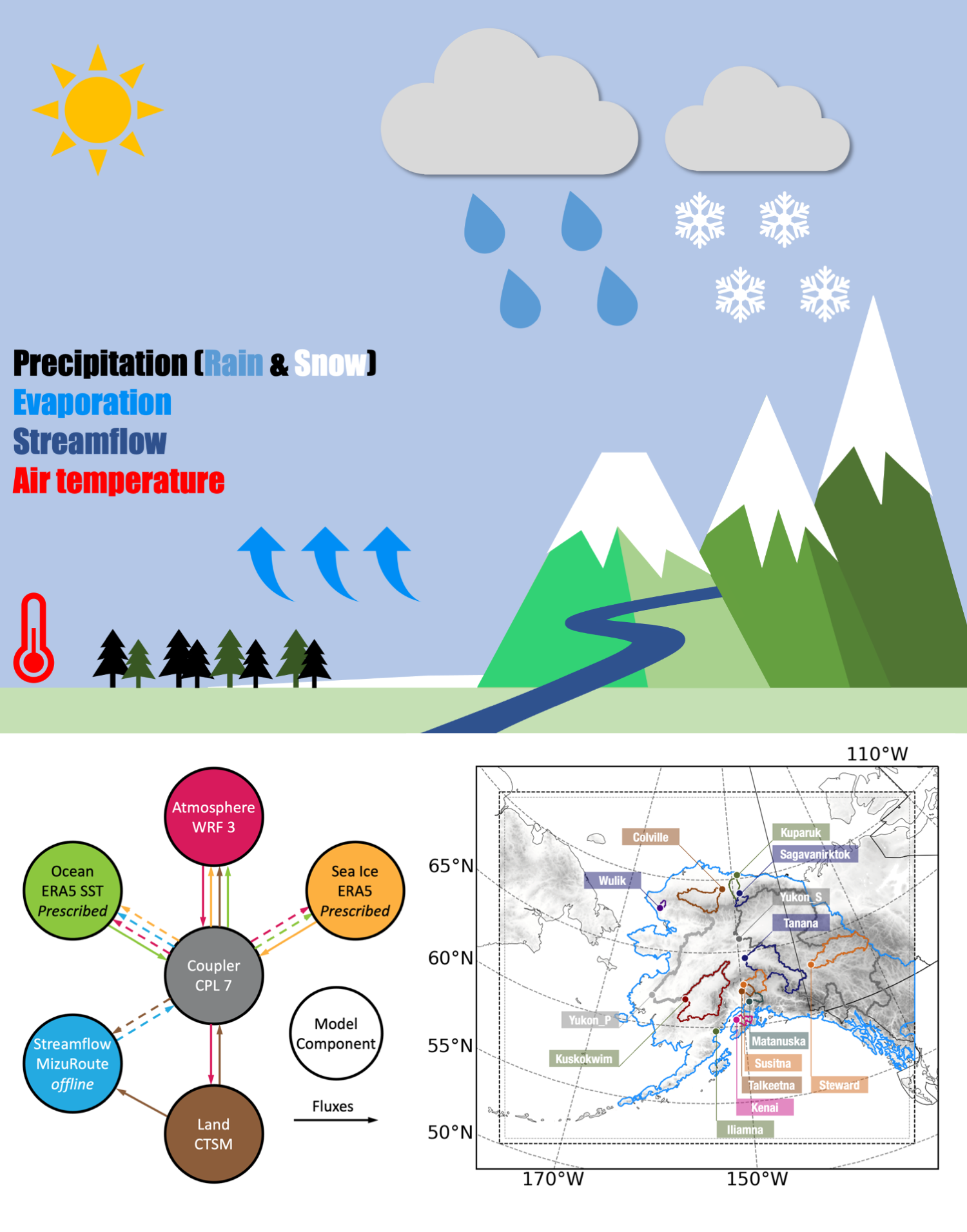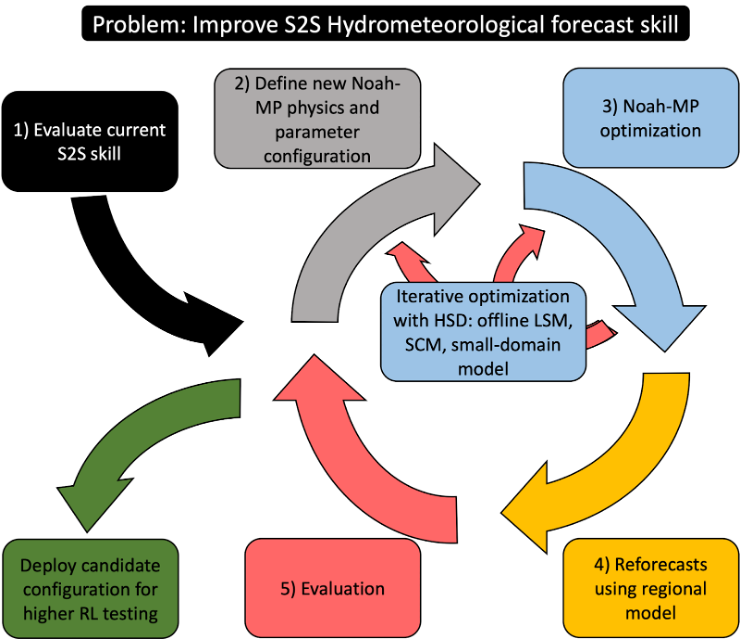Investigate the impacts of land surface processes and parameters on coupled land-atmosphere modeling and hydrologic fluxes

High-Resolution Coupled WRF-CTSM Modeling for Alaska and Yukon
In coupled modeling, the land component functions as the lower boundary and primarily focuses on upward energy and hydrologic fluxes. However, this often compromises the accuracy of the terrestrial hydrologic simulation, particularly runoff. I co-led an effort to configure a robust high-resolution coupled model for the Alaska and Yukon River Basin. This involves optimizing parameters for the Community Terrestrial Systems Model (CTSM, land) and manually examining physical options in the Weather Forecast Model (WRF, atmosphere). We conducted a 30-year simulation (1990 to 2021) using the coupled WRF-CTSM. Subsequently, we performed comprehensive evaluation comparing sensible weather and surface hydrologic variables. The evaluations indicate well simulated hydroclimate across most of the domain.
Dataset: Cheng Y., A. J. Newman, T. Craig, J. Hamman. A 30-year 4km coupled WRF-CTSM simulation for Alaska and Yukon River Basin from 1990 to 2021. In Prep. Publication: Cheng Y., A. Craig, K. Musselman, J. Hamman, A. Bennett, A. J. Newman. Coupled high-resolution WRF-CTSM modeling for hydrometeorology and terrestrial hydrology in Alaska (1990-2021). In Prep.

Improve the Land Model Hydrology and Land-Atmosphere Feedback Within UFS
NOAA recently funded a collaborative team consisting of researchers from the National Center for Atmospheric Research and University of Arizona to improve the S2S hydrometeorological prediction in the Western United States. I will serve as a co-PI. Our approach involves leveraging novel statistical evaluation, model optimization techniques and the Hierarchical System Development (HSD) paradigm for the Unified Forecast System (UFS). This project will commence in August 2023.
